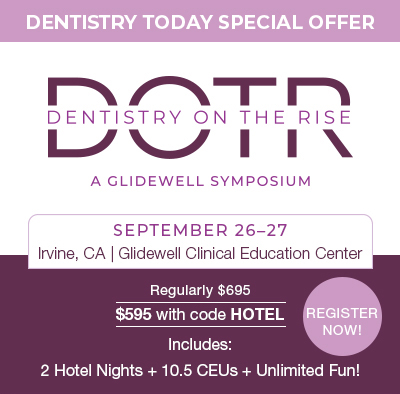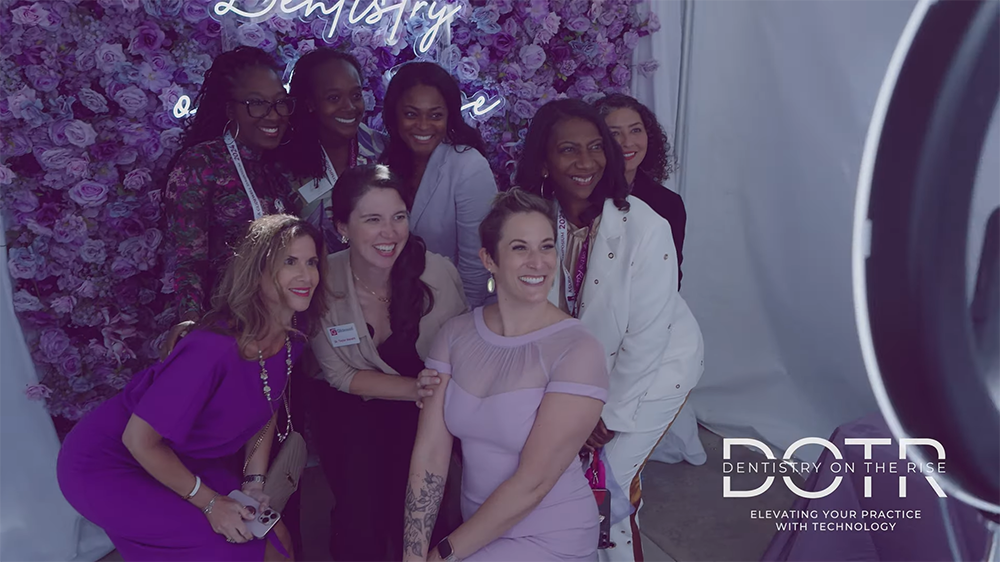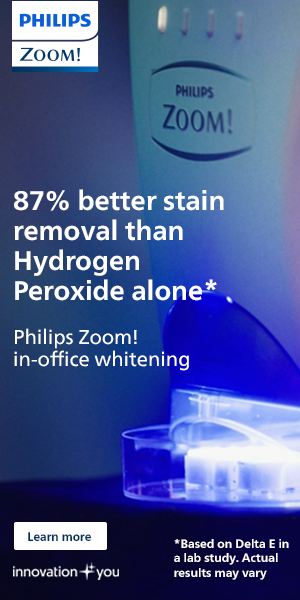Written by: DeAngelo S. Webster, DDS

Success is a game of hidden rules.
Growing up, I had no roadmap to success. No doctors, no lawyers, no business owners in my family—no one to show me the way. So, at 16, I did something that, looking back, was a little crazy.
I put on my best suit, grabbed a notepad, and drove to the wealthiest neighborhood I could find. I knocked on doors, ready to ask the people who had made it one simple question: “What does it take to be successful?”
I expected wisdom. Maybe even mentorship. Instead, I got doors slammed in my face. Cold stares. Nobody would even speak to me.
That day left a mark. It left me to believe that most people will not hand you the knowledge you need to succeed. The most powerful insights and strategies are often hoarded, left for you to discover only through pain, failure, and persistence. They will tell you “You don’t know…what you don’t know,” with a subtle smirk.
Upon dental school graduation, I opened a start-up dental practice in a building most people wouldn’t have looked at twice—abandoned, crumbling, filled with broken glass and asbestos. It had no plumbing, no electricity, no structure. But I saw potential where others saw ruin. I rebuilt it from nothing, and within months, it was thriving.
Through that process, I uncovered another truth: your dental practice and dental career are a reflection of yourself. Your habits. Your discipline. Your mindset.
They are the foundation of everything you build. Creating a better dental practice begins with creating a better version of yourself. It starts with culling the unessential and doubling down on the things you care about most.
That philosophy drives everything I do. It is why I created my dental education company, Practice Biopsy, to expose the strategies, efficiencies, and lean dentistry principles that most dentists are never taught.
It is why I write.
Through exposing my own personal journey through writing and teaching, I show the foundational brick-by-brick approach that it takes to improve oneself as a dentist and as a person, so that we all can get just a little bit closer to the dream life and career we’ve always wanted.
A Cure for Stressed and Overwhelmed Dentists

Dentistry is a paradox.
We are among the highest-paid and most respected professionals, yet too many dentists are exhausted, overwhelmed, and dissatisfied. We spent years mastering a difficult skill set, one that allows us to relieve pain, restore function, and improve lives. And yet—walk into any dental conference, study group, dental Facebook group, or online discussion forum, and you’ll hear the same things over, and over, again:
“The stress is never-ending.”
“Insurance is killing my practice.”
“I’m not making enough money.”
“Patients are ungrateful.”
“Staff issues never end.”
“I’m burnt out.”
“I feel trapped.”
Dentistry is drowning in frustration. The profession has alarmingly high rates of job dissatisfaction, mental health struggles, and even suicide. We tell ourselves this is just part of the job; that the struggle is unavoidable. But what if it’s not?
What if the stress isn’t coming from the job itself? What if it’s coming from how we approach the job? You see, there are some dentists who seem to operate on a different level—dentists who run smooth, thriving practices without constant chaos, who enjoy their work instead of resenting it. And seem to have quite well-balanced and happy lives.
I first saw glimpses of lean dentistry years ago in dental school when I viewed an old recording of Dr. Rick Kushner’s Lean and Mean seminar. His words struck me like a lightning bolt. The way he spoke about efficiency, simplicity, and cutting waste was in stark contrast to the world of frustration I saw around me. Many dentists I knew at the time were stressed and overworked. Their practices were chaotic, inefficient, and burdened by unnecessary complexity. But Dr. Kushner spoke of something different. A way of running a practice that eliminated stress rather than created it. A way of working that was lighter, smoother, and smarter.
I had to learn more.
Lean Dentistry Ideas From the East
In the early 20th century, manufacturing was a chaotic, inefficient mess. Production lines were slow, materials were wasted, and factories hemorrhaged money. Then came Toyota. Toyota revolutionized the industry with a new philosophy—what we now call lean thinking. They introduced a radical idea: Remove everything that does not add value. Every step in production had to serve a purpose. If something created waste—whether that waste was in time, materials, or effort—it was ruthlessly cut away.
The results were undeniable. Toyota became one of the most efficient and profitable companies in the world. Their competitors had no choice but to follow suit.
Dentistry is in a similar place to where manufacturing was a century ago—bloated, inefficient, and filled with unnecessary stressors that drain our energy and kill our passion. This is largely driven by enormous student loan debt, downward financial pressure by dental insurance companies, and skyrocketing practice management overheads. We are long overdue for a lean revolution in our profession.
Lean thinking is not just a manufacturing strategy—it is part of a much larger philosophy born out of the country of Japan regarding a mindset of efficiency, simplicity, and continuous improvement. From Toyota’s lean manufacturing to Marie Kondo’s decluttering principles to Kaizen’s 1% daily improvements, Japanese culture has given the world powerful frameworks for cutting waste, optimizing processes, and finding fulfillment. (The books, The Toyota Way to Service Excellence by Dr. Jeff Liker, The Life-Changing Magic of Tidying Up by Marie Kondo, and Kaizen: The Key to Japan’s Competitive Success by Masaaki Imai are good primers on these ideas).
Dr. Rick Kushner was applying lean thinking to dentistry long before the profession realized it needed it. His lean-and-mean model was built on similar principles Toyota used to dominate the automotive industry: Eliminate what does not serve you. Focus on the simple things.
While most dentists were chasing high-end, boutique-style practices, he focused on the efficiency of care, accessibility and affordability for patients, and profitability by the inherent design of the business.
Through my education and consulting work, I have reviewed the finances of more than 1,000 dental practices. What I have observed is striking. While some dentists have built phenomenal practices that enhance their lives and the lives of those around them, others have unknowingly constructed stress machines—bloated, expensive operations that trap them in golden handcuffs. These practices demand constant feeding, forcing their owners to endlessly “feed the beast” just to keep the doors open and the bills paid.
This puts patients in a precarious position, where the money in their pockets becomes essential for the dentist’s financial survival. The line between healthcare provider and business owner begins to blur as bringing money into a struggling, overbuilt practice becomes a matter of necessity rather than a footnote to quality patient care.
This starkly contrasts the lean, well-run practice, where money is an afterthought rather than a constant concern. By improving and simplifying the business, you see, it becomes more profitable—in a way, removing the significance of money and restoring a genuine bond between doctor and patient.
In a lean dentistry practice, dentistry is restored to what it was meant to be—a profession built on trust, skill, and service rather than an endless struggle to stay afloat. The lean approach isn’t a final destination—it’s a mindset—a way of seeing your practice and yourself through a new lens. And the deeper you go, the more possibilities reveal themselves.
So, ask yourself: if you weren’t buried in the weeds…what could you grow?
Because you don’t know what you don’t know. But you can. And I’m here to help make sure of it.
Follow me in my new column on dentistrytoday.com for “the rest of the story.”
ABOUT THE AUTHOR
Dr. Webster is a distinguished graduate of the University of Michigan School of Dentistry based in Ann Arbor, Mich. He has successfully blended his roles as a private practice owner, continuing education instructor, social media personality, and writer. Renowned for his dedication to continuous improvement and lean business principles, he owns and manages the company Practice Biopsy, which provides business education and self-improvement resources for dentists far and wide. You can explore his work at the website practicebiopsy.com. He can be best reached by visiting his website at practicebiopsy.com.
Disclosure: Dr. Webster reports no disclosures.
ANNOUNCEMENT
As the article mentions, Dr. DeAngelo S. Webster will be launching his very own Practice Biopsy column right here on DentistryToday.com.
Stay tuned for updates on the release of the first installment.
Dr. Paul Feuerstein, our editor-in-chief, sat down with Dr. Webster for an interview to discuss the upcoming column and various other subjects.
Press play to learn more about Dr. DeAngelo S. Webster.




